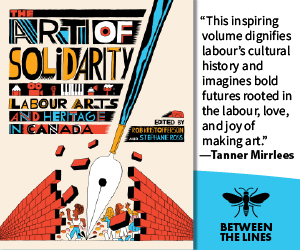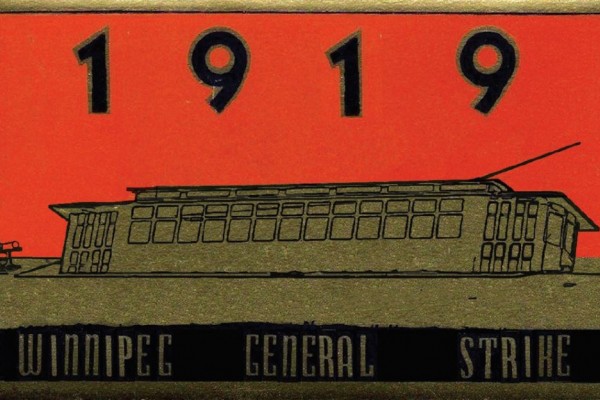The time is now for real resistance to Ford’s austerity agenda
Make no mistake, we are in a class war

Supporters of education workers demonstrate in Toronto, November 1, 2022. Photo courtesy CUPE Ontario/Twitter.
It has been whirlwind week for labour in Ontario.
On November 2, Ontario’s Progressive Conservative government passed a bill to ban 55,000 education workers from striking after mediation between the province and the Canadian Union of Public Employees (CUPE) failed to reach a deal. The Ford government employed a double-pronged negotiating tactic using a (rotten) carrot and big stick, with a bad offer on the one hand, and the notwithstanding clause to overrule the illegality of anti-strike legislation on the other.
As negotiations fell apart Thursday afternoon after the Ford government refused to give more than a two percent a year raise for workers making less than $40,000, Education Minister Stephen Lecce unveiled Bill 28, the Keeping Students in Class Act, designed to head off a legal strike by CUPE-affiliated education workers. It would allow the government to impose a four-year contract on workers including custodians, maintenance workers, and tradespeople, and further protect the legal standing of the contract, its clauses, and the process in which it was passed, from any legal challenge in the courts.
Why is this a big deal?
Since the election of Conservative Premier Mike Harris in 1995, education workers have been under regular attack by the provincial government. Harris made numerous cuts to education during his ‘Common Sense Revolution,’ culminating in the 1997 Education Quality Improvement Act, which slashed education spending, transferred school board powers to the province, and weakened teachers unions. This resulted in the largest education strike in North American history (up to that point), with a province-wide walkout of over 126,000 teachers for a two-week period.
The Liberal government of Dalton McGuinty was no slouch, either, with its 2012 bill bearing a similar name (Putting Students First Act) that targeted teachers with cuts to wages and previously won benefits and effectively eliminated collective bargaining rights for Ontario’s elementary and secondary school teachers. According to labour historians Doug Nesbitt and Andrew Stevens, it imposed a “two-year wage freeze, a 97-day delay on pay increments, three unpaid Professional Activity days, a halving of annual sick days to ten, and an end to the banking of unused sick days throughout a teacher’s career.”
Ford’s latest gambit marks a continuation of the austerity measures of previous governments. The key difference is the premier’s authoritarian reading of the Charter of Rights and Freedoms and invocation of the stigmatized notwithstanding clause (the second time he has enacted it) to overrule challenges to a clearly illegal bill being passed in a bad faith process within the legislature.
The notwithstanding clause and the erosion of democracy
The notwithstanding clause was added into the Charter to protect Canada’s historic institutional alignment with parliamentary supremacy, the constitutional arrangement that stipulates the legislature has the final say on what becomes law. With the increased role of the Supreme Court of Canada due to the Charter, Section 33 would be a legislative option for elected governments to overrule judicial review on what was thought to be incredibly important legislation. It was also designed to appease the interests of provincial governments to resist certain types of legislation passed and imposed by the federal government in provincial jurisdictions.
What has happened since 1982, at least outside of Québec, has been the development of a soft convention against using the notwithstanding clause at all, to the point that it is rarely invoked (or if it is, only as a threat that does not get to the point of actual legislation). Ford has violated this norm during his time as premier, once threatening to use it to overrule the courts when he cut the number of Toronto wards in the middle of the city’s 2018 mayoral election, and later to protect third party advertising rules (Protecting Elections and Defending Democracy Act) that were deemed illegal in 2021. It is important to emphasize that the notwithstanding clause had never been invoked in Ontario between 1982 and 2017.
The use of the nothwithstanding clause allows Ford to overrule challenges based on the Human Rights Code or from the Ontario Labour Relations Board. As Tom McDowell argues in his award-winning book, Neoliberal Parliamentarism: The Decline of Parliament at the Ontario Legislature, this reflects an effort to exploit legislative tools to silence debate, increase expediency, and use procedure to undercut politics both within and outside of the legislature.
It’s worth remembering that one of Ford’s first legislative acts in the 2018 summer emergency session was to interfere in the CUPE3903 strike involving predominantly contact faculty and tutorial assistants and legislate them back to work instead of forcing a bad faith employer to negotiate with its workers. In subsequent years his government passed multiple pieces of legislation undercutting wages, job protections, health and safety protocols, basic regulations regarding worker rights, and imposed draconian contract stipulations on all public sector employees, namely the one percent wage increase cap on all union negotiated contracts with the province.
What should the response be?
Make no mistake, we are in a class war. Papers like the National Post (which routinely invoked the Charter during the Convoy protests) have trotted out their columnists to call the right to strike “invented” (all rights are invented), or to argue that the notwithstanding clause is “necessary to uphold the rights of students.” It’s hard to tell if the right is politically unwilling, or simply intellectually incapable of having a nuanced discussion about the substance and democratic tensions inherent in the Charter.
The time has come for real political resistance to Ford and his austerity agenda. At the heart of this specific union contract are the foundations of decades of anti-worker politics that must be confronted head-on. And while legal wins are essential, they cannot stand in for mass mobilization by workers. Like the response to Harris in the late-1990s, Ontario needs another province-wide day of action extending beyond a single day of “illegal” strike and solidarity actions. These are battles that are won in the streets by rank-and-file unionists and their allies. We must support them.
Ryan Kelpin is a doctoral candidate in the Department of Political Science at York University. His area of research pertains to Toronto and Ontario politics, neoliberalization, and de-democratization.










